Or… My adventures in trying $240 worth of boutique Op-amps in a $60 amp kit.
I’ve been curious about the notion of “op-amp rolling” ever since being bitten by the tube amplification bug a few years ago. Tube guys are forever collecting esoteric and expensive tubes to try in their amplifiers, all with the intended purpose of chasing that ‘ultimate’ sound.
Rolling tubes, while having absolutely nothing to do with physically rolling the round tube down a surface, may have been named from the circular rocking motion used to remove a tube from a socket. “Rolling” makes even less sense when applied to popping chips in and out of a solid-state amplification circuit. Be that as it may, enthusiasts and audiophiles will often bring up op-amp rolling as a worthwhile upgrade path for headphone amplifiers.
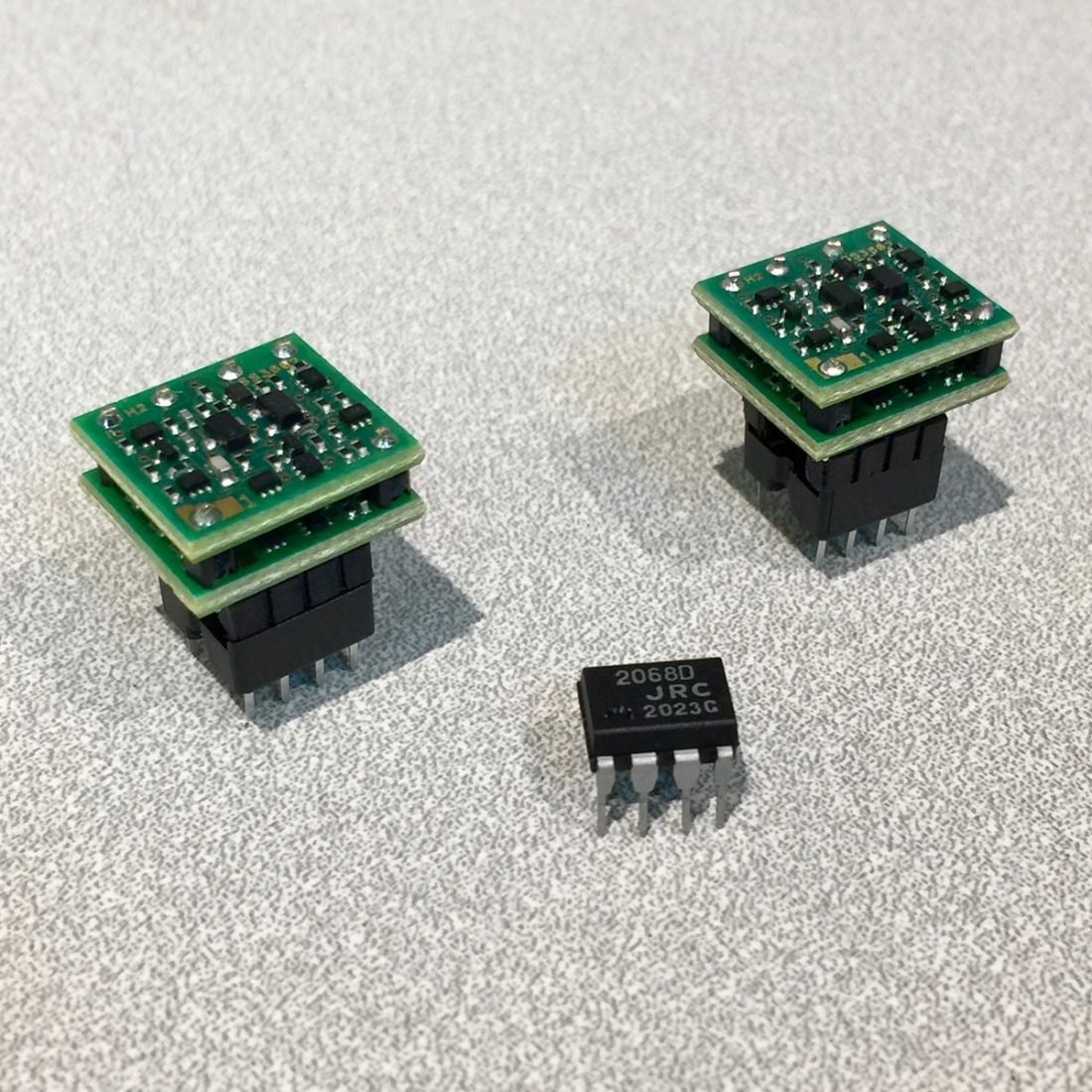
Table of Contents
Let’s start at the beginning: what is an Op-amp?
An Operational Amplifier (op-amp) is one of the most basic building blocks in circuit designs. An op-amp is typically an IC (integrated circuit – the equivalent of many transistors, resistors, and capacitors in a single tiny chip) that amplifies signals. Many op-amps (also known as dual op-amps) include two op-amps in a single chip, one for amplifying each stereo channel: left and right.
In the discussion of an op-amp’s quality, there are several technical terms that are often mentioned:
- Gain
- Slew rate
- Impedance
- Voltage
The ratio of an input signal (lower) to an output signal (higher) is described as the gain of the op-amp. In a perfect op-amp, the output would change instantly, however, in reality, the term ‘slew rate’ describes how fast an op-amp can change the output voltage. A perfect op-amp will also have infinitely high input impedance while the output impedance would be negligible (0).
Since none of these ideals are possible, we settle for a fast-enough slew rate, with a high-enough input impedance and low-enough output impedance.
Theoretically, the chip with the best measurements should sound the best, however, the circuit it resides in must be designed to match.
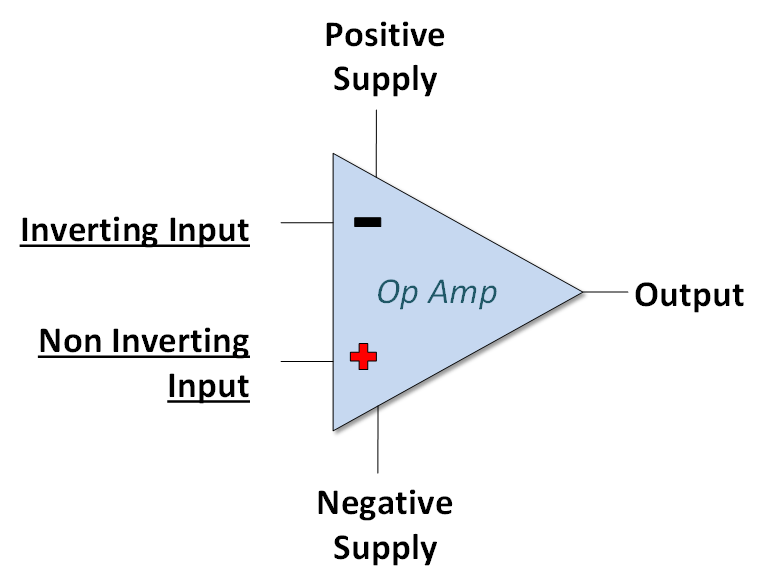
How did the term “Op-amp rolling” came about?
Op-amps are used in almost everything with a headphone jack (excluding tube-only designs). Depending on the device, cheap op-amps and other parts may be employed; so swapping for op-amps with better specifications is an oft-suggested audiophile option for upgrading headphone amplifiers. This is made especially easy for the end user, if the op-amps are pushed into sockets on the board, rather than soldered in place. Thus the notion of op-amp “rolling” was born. Much like tube rolling in tube amplifiers, it is the practice of swapping different parts (chips or tubes) to see if the sound quality changes.
So that inevitably leads to this question: Are there audible differences between op-amps?
Most op-amps range in price from $1 – $20 but there are a few expensive, boutique op-amps available that are designed for high-performance audio applications. The Dual Discrete Op Amp SS3602 from SparkOS Labs, are drop-in replacements for many common 8 pin DIP format chips (dual in-line package with a rectangular housing and two parallel rows of electrical connecting pins). Note that the SS3602 are not single IC (integrated circuit) chips, but are constructed from individual components and boards (that’s what makes them “discrete”).
The SS3602 are approximately 15 mm square and 15 mm high from the tip of pins to top. This means they are much larger than a typical op-amp chip (approximately 8 mm length x 9 mm width x 7 mm high) but will fit in many non-portable amplifiers that provide enough clearance. The SparkOS chips, while several times the price of monolithic IC (Integrated circuit) op-amps, claim much higher performance in gain, noise, and current. They are extremely well-designed and manufactured, but are they audibly superior?
There are theories that noise and input errors cause audible differences between op-amps. The power supply may introduce noise. Thermal errors may be created by insufficient power dissipation when driving low impedance headphones. These tests and results are typically not part of manufacturer datasheets and require sophisticated testing equipment to objectively determine results, however, they may account for some of the perceived sound quality differences between different op-amps.
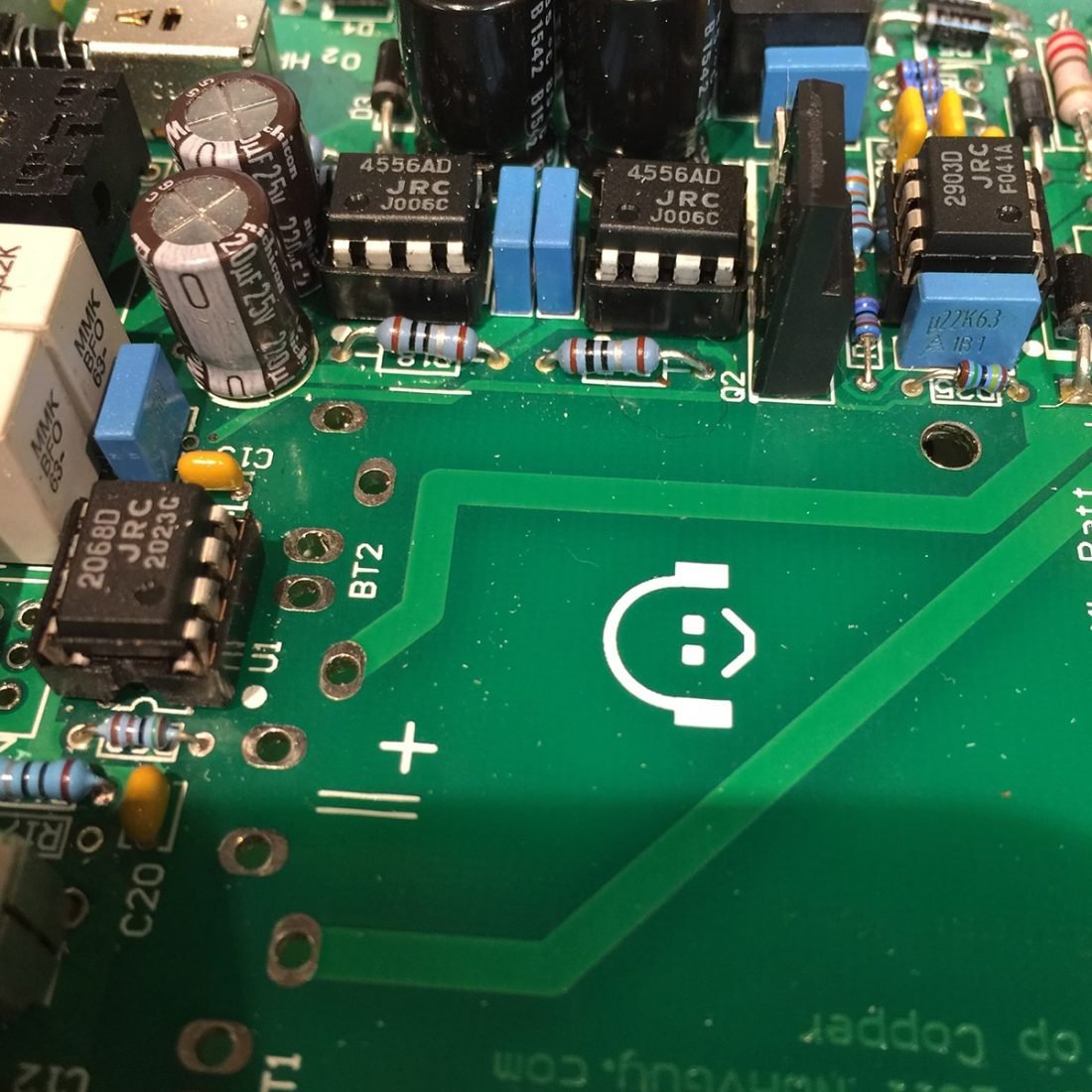
Testing
This test is limited by several significant factors:
Me
I don’t have magical ears. This may be because I’m in my mid 40’s and my hearing range is limited. Or it may mean I’m not as critically demanding as some better-trained ears. Critical listening is a learned skill and without a doubt there are others that are more able to discern small differences (to be honest, I’m glad to not quite have that level of ability – it would be a curse to never be satisfied with anything but the very, very best). I do sometimes find contrasting experience with many components that others may passionately disparage. I believe that most tweaks are discernable, but the overall impact is often slight, and the transducer itself that transforms electrical signals into sound waves (whether speaker or headphone driver) has by far the greatest impact on the sound you hear.
I have a preference for tube amps and vintage stereo equipment (although not so much for the sound of vintage headphones), and admittedly tubes don’t have ruler flat measurements and tend to be predisposed towards warm distortion. I also believe in ‘bang for the buck’ and the theory of diminishing returns. Great sounding equipment can be had for reasonable sums of money, and squeezing the last few percentage points of subjective performance becomes exponentially (and prohibitively) expensive.
Testing methodology
This was far from a blind test. In order to swap op-amps, I had to pause the music, turn the amplifier off, carefully pull out the old chips and just as carefully insert the new ones, turn the amplifier back on and un-pause the music. With practice, I improved my technique. I positioned the amplifier upside-down, nearby and open to facilitate ease of chip removal and insertion.
Like everyone else, I have subjective expectation biases and unreliable long-term memory for sound comparisons (I never put stock in someone comparing something they heard from hours, days or weeks ago). I believe in blind, quick-change A-B comparisons of the same musical passages are about as good as it gets.
It took about a minute to swap op-amp chips in and out of the amplifier (to avoid damaging delicate pins). In full disclosure, I went into this expecting to hear a bit of what I had read and heard about the SparkOS Labs chips, namely: a “massive step-up in sound quality… totally different league compared to the original regarding musicality, detail, sound staging, air, and presence”.
Expectations (large or small) can be an issue either way. If you expect to hear a large change, you may be disappointed with a modest improvement. If you expect to hear no change, you may overlook any slight improvements. So, like any good reviewer, I attempted to minimize my expectations and biases, while not ignoring that I may have them. I had fewer expectations of differences between the reasonably well-respected (and fairly inexpensive) standard IC op-amp chips than between the chips that were 40-50 times the price.
Remember, this test is by an audio enthusiast, not a test lab. It is subjective and doesn’t include measured data. I’m telling you what I heard and not what can be measured in an ideal state. At this point, you may be thinking that there are an awful lot of disclaimers. I’m expecting this write-up to be somewhat controversial and I’m striving for transparency.
Gear
I used a number of well-respected mid-range headphones for testing:
- Audio-Technica MSR7NC
- Meze Audio 99 Classics
- Sennheiser HD650
- Grado SR325i
- a couple custom Grado clones (wooden cups with Symphones V7 and V8 drivers)
While they are not top of the line, endgame headphones, they represent a variety of different sound signatures, some open and some close-backed, and a range of impedances. All having their own strengths.
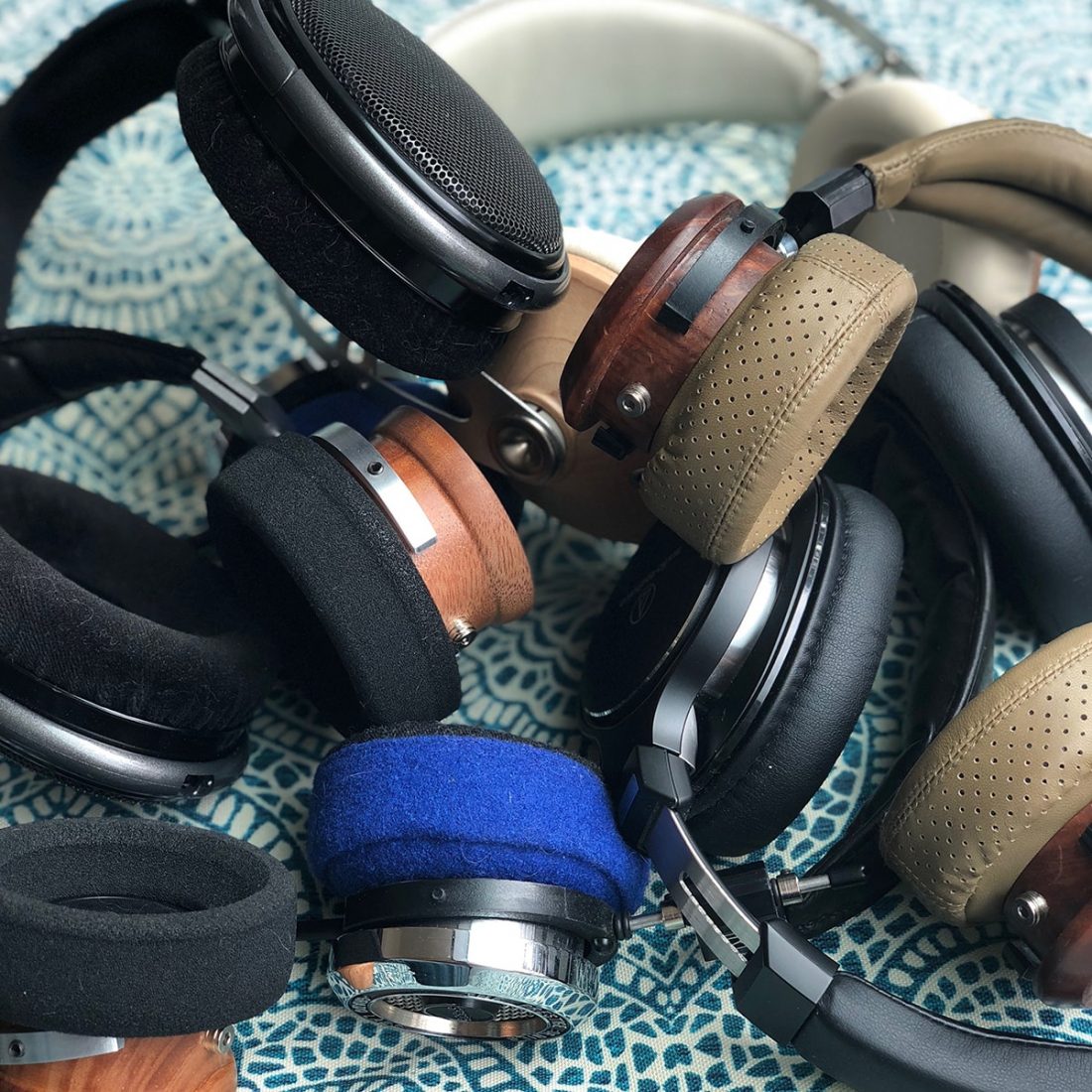
I tested a limited number of chips, but with a fair range of prices and manufacturers. This was partially due to what I could request as test samples and for fear that the testing and review would quickly spiral into an unmanageable amount of work. I created note sheets for each chip, with the expectation that I would write the differences in perceived sound and swap back and forth between chips – noting the comparative strengths and weaknesses. I have seen other similar comparisons, listing audible changes in soundstage, imaging, bass, midrange, and treble. Rather than reinvent the wheel, I planned to do similar impressions.
I tested the following op-amp chips (prices listed are per chip organized from least to most expensive):
- NJR Corporation NJM4556 – $1.39 CAD (Digikey.ca) – included in O2 kit
- NJR Corporation NJM2068 – $1.15 CAD (Digikey.ca) – included in O2 kit
- Generic eBay OPA2107 – $2.44 CAD (Ebay.ca)
- Texas Instruments OPA2134 – $6.80 CAD (Digikey.ca)
- Analog Devices AD746JN – $16.39 CAD (Digikey.ca)
- Texas Instruments OPA2107 – $29.02 CAD (Digikey.ca)
- SparkOS Labs SS3602 – $79.80 USD (~$100.15 CAD) (SparkOS.com)
Other Op-amp Rolling Options
An assembled JDS Labs O2 is available via Amazon (or directly from JDS Labs), or alternatively the Mayflower Electronics version with included NwAvGuy ODAC installed and assembled.
If you are curious about trying this test yourself, possible op-amp rolling options from Amazon include:
- NE5534 ($10 USD for 10 at Amazon.com)
- Texas Instruments NE5532P ($1.15 USD at Amazon.com)
- National Semiconductor LM4562NA ($9 USD at Amazon.com)
- OPA2107 ($10 USD at Amazon.com)
- OPA2228 ($10.64 USD for 5 at Amazon.com)
- Texas Instruments OPA2134PA ($12.55 USD at Amazon.com)
- Sonic Imagery Labs Model 990Enh-Ticha ($69 USD at Amazon.com) – Discrete Op-amp
- Burson Audio V6 ($85 USD at Amazon.com) – Discrete Op-amp
The heart of this review may be the biggest stumbling block for some readers. I’m using an Objective 2 (O2) amplifier (assembled by me in kit form from JDS labs). This amplifier tends to be a polarizing one in the headphone enthusiast community.
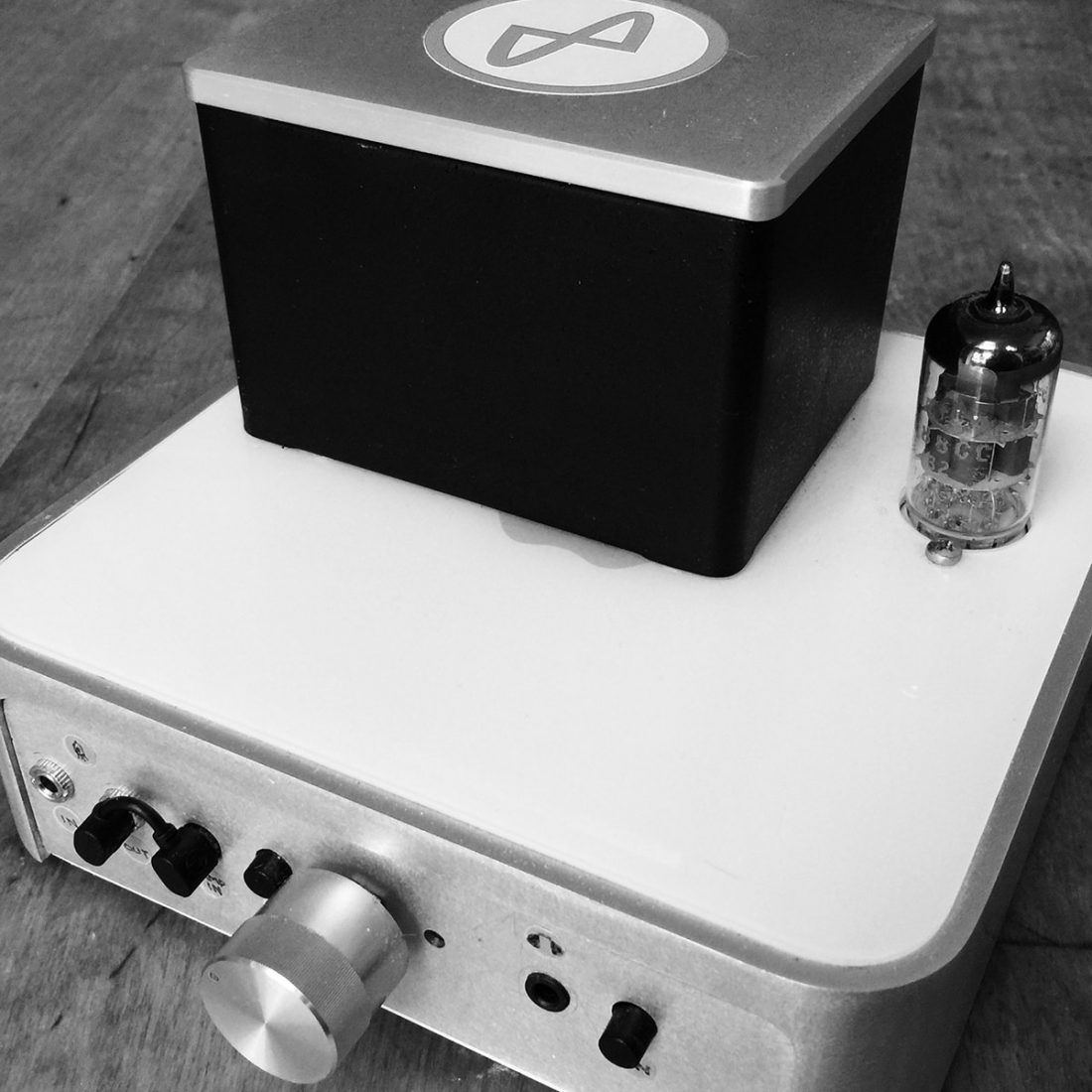
The Objective 2 (O2) Headphone Amplifier
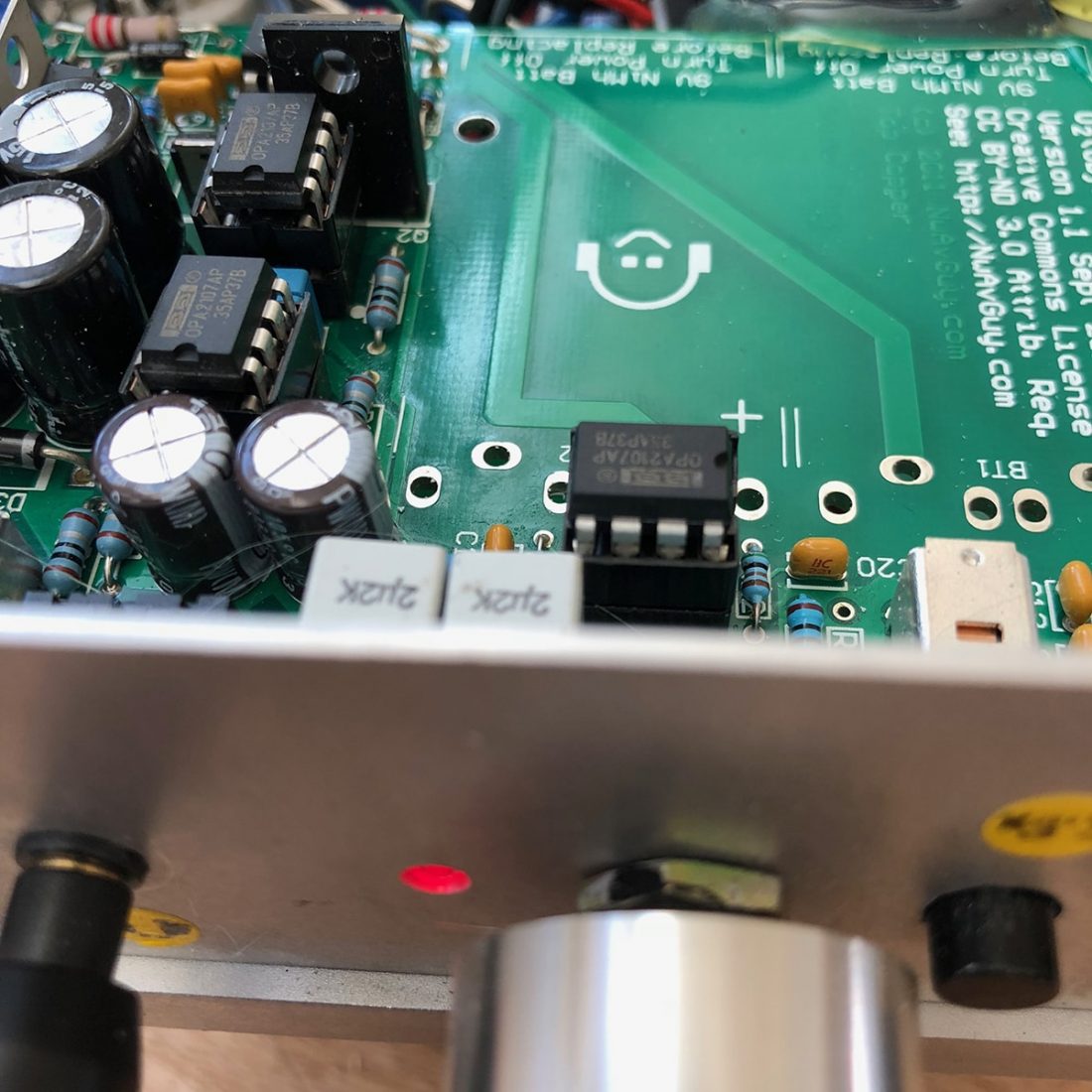
Origin of the Objective 2
If somehow you missed hearing the unique backstory of its development, the Objective 2 was originally designed and released with an open source license to the public by an unidentified individual who went by the moniker NwAvGuy. He disappeared from the personal audio online scene in 2012 but his products are still produced and sold today. As his designs were released as open source, he receives no income from the ongoing production. He adopted a controversial and sometimes confrontational approach (he was banned from many of the enthusiast forums) and set out with the goal to create a simple, inexpensive, and (above all) neutral amplifier that could adequately power almost any pair of headphones without adding background noise. The Objective 2 is the result of his labour.
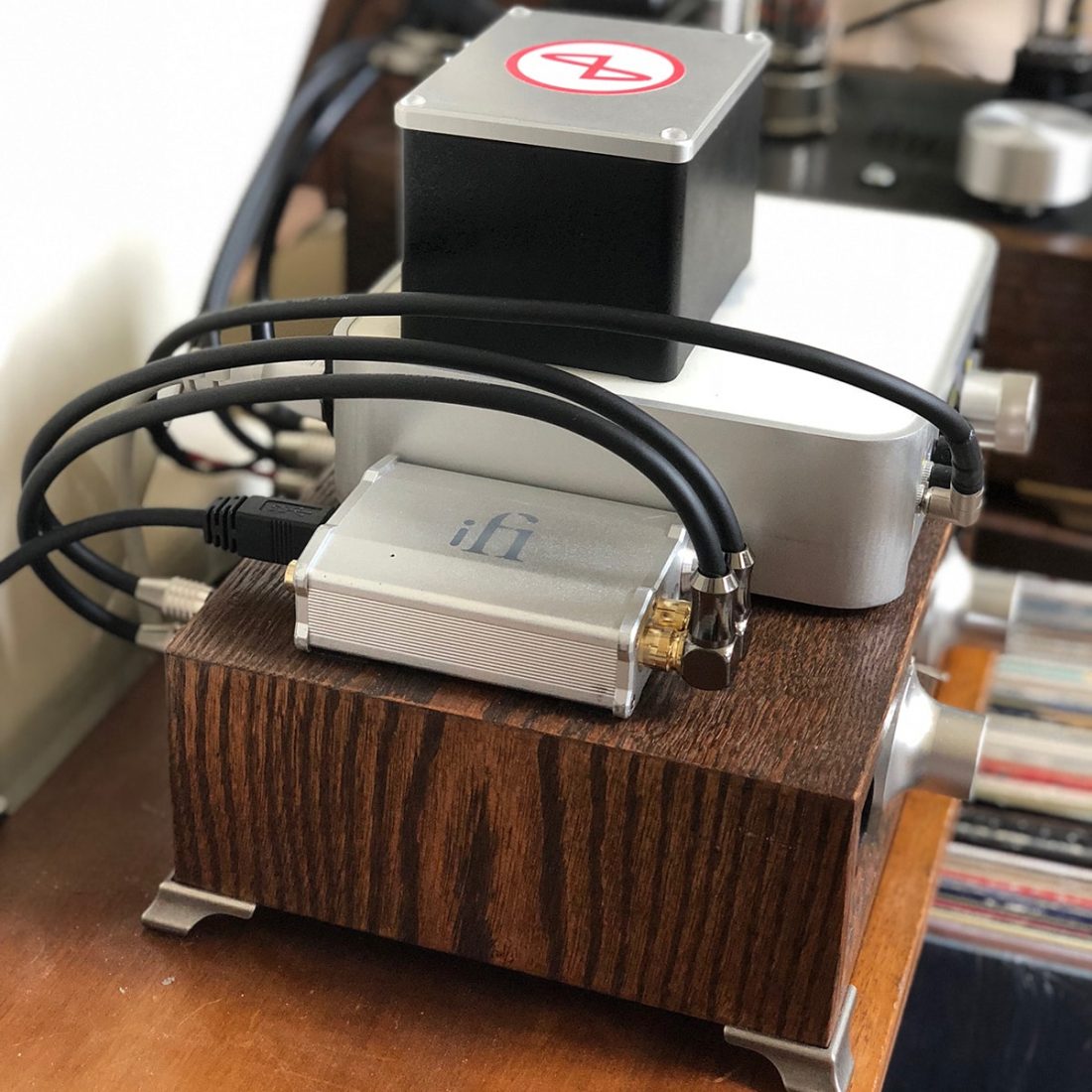
The Objective 2 headphone amplifier has plenty of fans and detractors, but most folks agree that it succeeds in having a very low noise floor (the hiss of the circuits is almost inaudible as the volume is increased). It’s also (very much by design) neutral sounding, meaning little to no coloration of the music, in other words, no frequencies being audibly boosted or recessed. This sound signature, however, has lead many to feel the amp is somewhat boring and relatively un-engaging sounding. Some describe the O2 as analytical, cold, and occasionally exhibiting high-end grain (which may be a result of audible distortion). It can run off battery power, and there are concerns about proper power management when the batteries get low, however, the size and shape of the amp, in my opinion, make it better suited to desktop life with a dedicated power supply.
So why use an O2 for this test? I own one and, in general, I like it. Full disclosure, I used the JDS Labs O2 amplifier kit to build a hybrid amplifier (tube buffer input feeding the O2), but for this test, the tube section was removed from the circuit so I was using the original O2 3.5mm input and output for assessment. I actually prefer the sound with the tube buffer in the circuit, but I’m unapologetically a tube guy and favor that sound signature.
Love it or hate it, the O2 is an inexpensive staple in the headphone amplifier market and is perhaps the most well known and widely owned by enthusiasts. It is often the gateway or first amplifier in the climb towards better sound. The low price and ubiquitous popularity make it an attractive test bed to see if buying more expensive replacement op-amps is a worthwhile option, rather than purchasing a more expensive amplifier.
The Objective 2 is designed to be transparent and detailed sounding while remaining electrically relatively simple in design. With this in mind, changes to a major component (such as an op-amp) should be discernible if the new component has a different sound signature. The O2 headphone amp uses three DIY-friendly DIP 8 style dual op-amps. It requires op-amps that can operate comfortably at +/- 12 volts (24 volts total). This rules out single devices, surface mount packages, and lower voltage op-amps. In technical terms, dual op-amps are used because the crosstalk within the chip is typically better than the rest of the headphone amp circuit and is often better than the plug on the headphone itself.
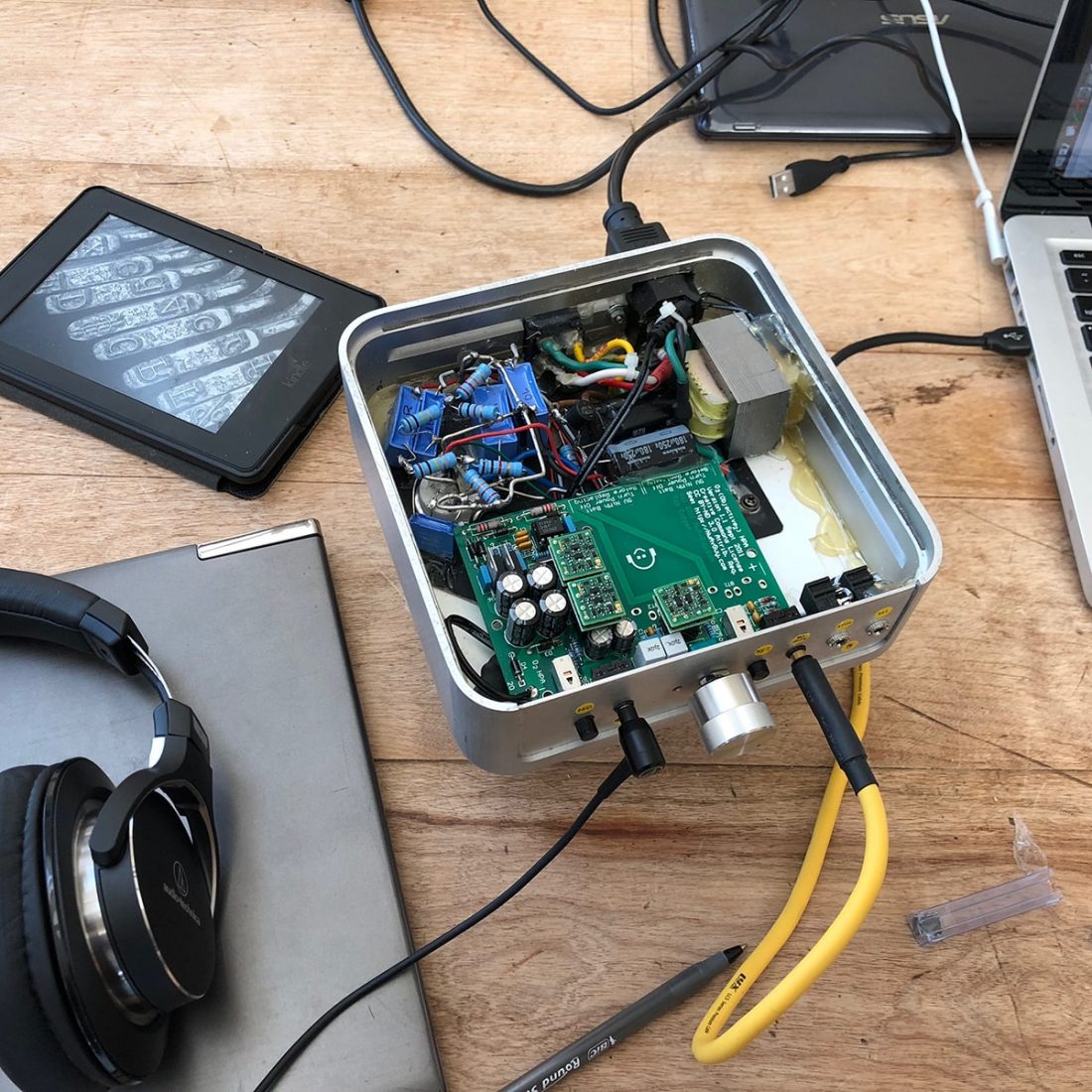
Test results
Here you will find my extensive write-up and notes of all the perceived audible differences between op-amps. Differences to be listed and carefully detailed ad nauseum. This is predictably going to be a charged and controversial section. All testing was done over the course of several weeks, at different times of day, and used all the equipment listed above. Here goes.
There were no clear results.
Try as I might, I couldn’t consistently replicate perceived quality differences between swapping the op-amps in the O2 headphone amplifier. I would note that something sounded deeper, more controlled, exhibited a larger soundstage, etc. Then I’d swap back. Or change headphones. Inevitably I found that I couldn’t repeat the impression. Occasionally I’d forget which op-amps I was currently listening to and think, “ok, there I hear the improvement again”, only to find that it wasn’t the op-amp that I had prior attributed the improvement to.
So is this outcome created by limitations of test methodology, gear or me?
Interestingly, the topic of op-amp rolling is one that NwAvGuy covered in some depth with regards to the O2. He bluntly stated that the theory of most op-amps sounding different is a myth. “… Used properly, in a typical audio application, I’ll challenge anyone to a listening test and bet they won’t be able to tell the above three op-amps apart. The only catch is it would be a blind test and the listener won’t know which op amp is which.” He maintained that op-amps are designed to be transparent and to amplify the signal without colouring it.
He stated one of the issues that have led enthusiasts and reviewers to hear differences between op-amps, is when they are used in incorrect applications. “If you compare overloaded op-amp A against overloaded op-amp B you may hear some differences in their highly distorted performance.” However used in the appropriate application, these differences become inaudible. Op-amps are complex in design and are optimized for different applications. Although they share the same pin configuration, this does not mean that they are compatible in all cases.
Some op-amps perform better than others when used (pushed) beyond their specs. Manufacturers will tend to lean towards op-amps that are as stable as possible in their designed circuit. For instance, most modern audio op-amps are virtually never stressed for slew rate. “…Any op-amp with a slew rate of 3 V/uS or greater is fast enough for nearly any audio application on the planet. And opamps like the 5532 can easily have bandwidths out to 200+ kHz in most applications which results in negligible phase shift or “delays” in the audio band.” Using an op-amp rated for a very high slew rate in a circuit designed for a slower chip may add instability and result in worse noise and/or distortion performance. NwAvGuy also states that op-amp slew rates “…in the range of 2.5 – 5 V/uS is ideal for a high output headphone amp like the O2”.
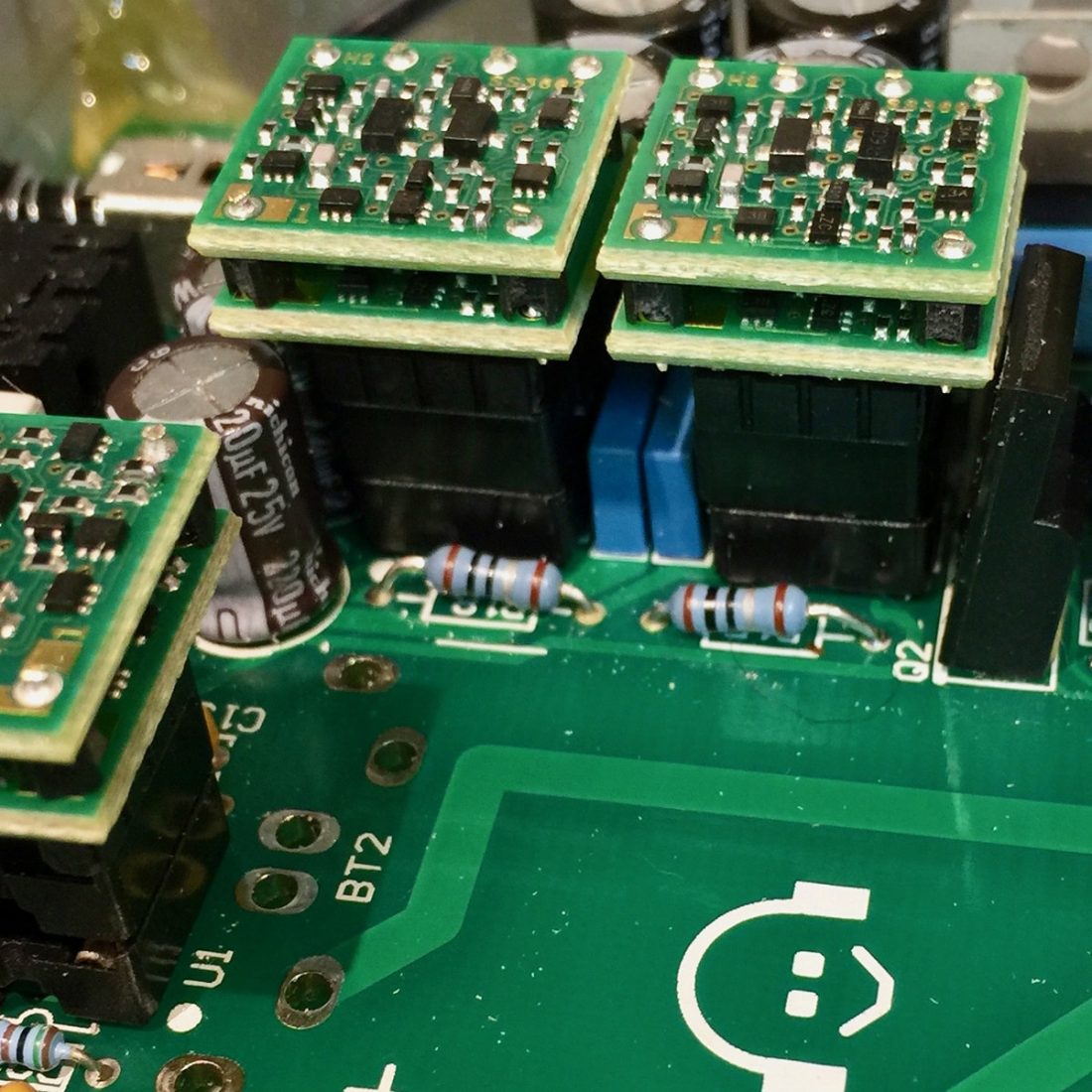
Conclusion
First off, let me thank Andrew Sparks of SparkOS Labs for the extended loan of the SS3602 op-amp chips, and his professional and friendly response when I shared my findings (likely not the results he expected). Thanks to Analog Devices and Texas Instruments for providing samples, as well.
I want to note that NwAvGuy did explicitly call out reviewers who do exactly what I did for this test. These testers “lack the test equipment to have any idea if their op amp swaps help, hurt, or are just a waste of money. They simply use their ears, with highly biased sighted listening, and draw all sorts of erroneous conclusions.” I point this out to ensure that I am (and the readers are) aware of the limitations of this sort of test. Without the ability to measure the results of op-amp rolling, changes that create a ‘different’ sound, when coupled with listener expectations, may be interpreted as the listener as sounding ‘better’, but when measured objectively, may actually show poorer performance. NwAvGuy tested more than two-dozen op-amps when designing the O2 and optimized the circuit for the ones that tested best. His choices and comments:
At gains less than 4X, nothing could beat the NJM2068 [$1.15 CAD from Digikey.ca] in the O2’s gain stage.
For the output stage, the NJM4556 [$1.39 CAD from Digikey.ca] was untouchable among compatible DIP8 dual op amps.
Why would a large-scale headphone amplifier manufacturer use a cheaper op-amp if a better IC op-amp can be had for only a few dollars more? Logically, they probably wouldn’t.
According to NwAvGuy,
“…there’s little reason for a manufacturer to not to use an ideal op-amp. For another they likely have $50,000+ worth of test instrumentation and can precisely measure differences between op amps. They also designed the circuit the op-amp is in, so they better know what requirements matter most. But it seems a lot of audiophiles only see an inexpensive op-amp on a circuit board that needs replacing. They may not understand the rest of the circuit, have any way to know if they’re creating new problems, etc.”
It does warrant keeping in mind that part of NwAvGuy’s intention when designing the Objective 2 was to pointedly illustrate how lower cost options can outperform higher cost amplifiers from other manufacturers, so there may have been some bias towards using the least expensive parts when designing the O2.
But what about high-end discrete op-amps such as the SparkOS SS3602 that is designed to specifically outperform IC op-amps? The question then becomes, are these performance benefits audible, when factoring in the limitations of the gear used and the ears on your head? Certainly, the audiophile world values these discrete boutique replacements, and for some, they may provide real-world advantages.
I maintain, however, that I couldn’t hear a difference between any of the op-amps when used in the Objective 2. NwAvGuy states that high-end op-amps “…may show their true colors in critical applications, like say inside a $20,000 audio analyzer, [but] it’s hard to imagine where they offer any real-world benefit inside a headphone amp.”
The SparkOS SS3602 is an extremely well made and impressive device, and in a different scenario may be the perfect solution for squeezing that last bit of performance from top end gear. With the humble O2 however, buying better headphones or (perhaps) a different amplifier is going to yield a far more significant sound quality improvement than investing in high-end boutique op-amp replacements.
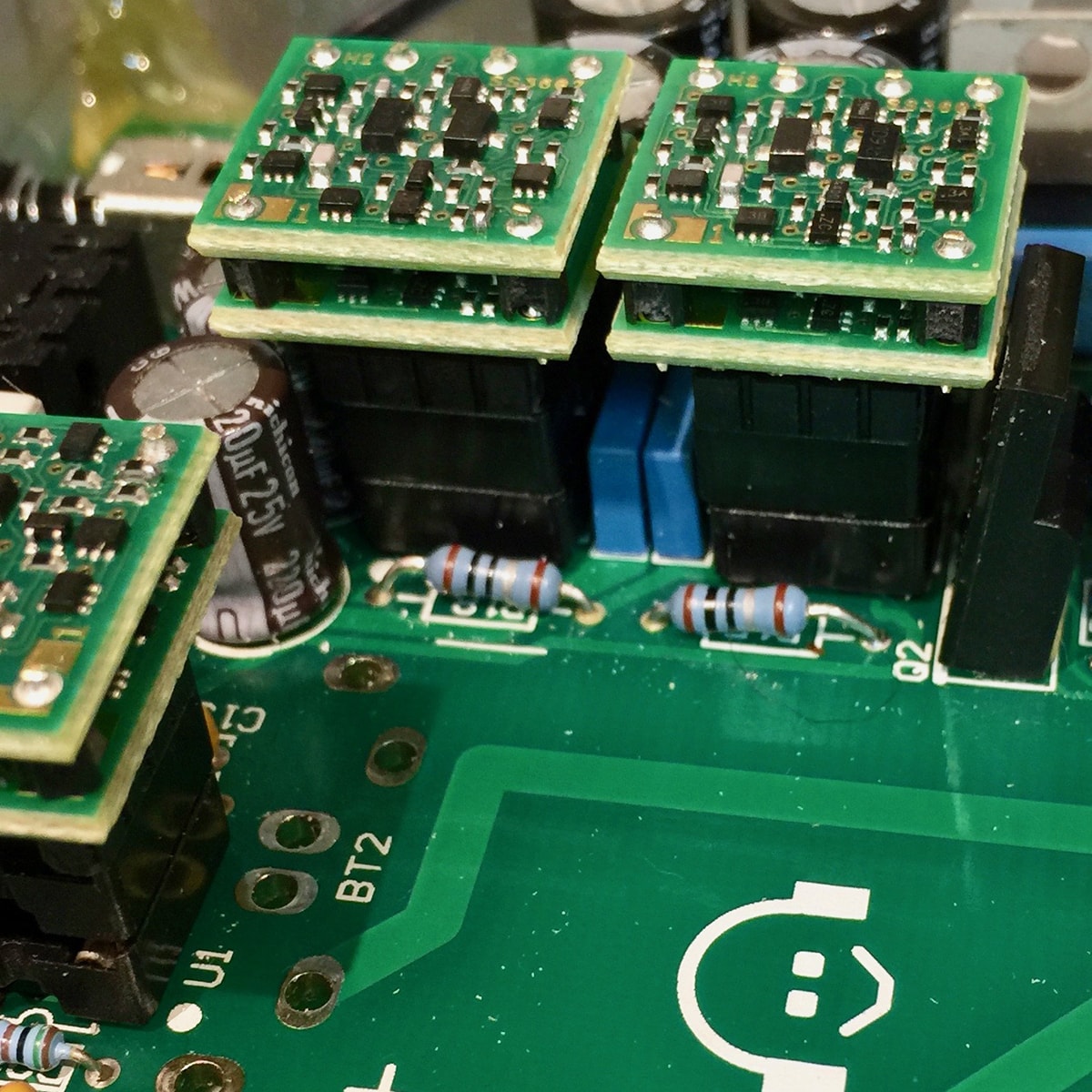
Very interesting read and thoughtful conclusion.
If you buy opamps at Amazon more than likely they are counterfeit.
Almost fell into the opamp rolling camp until a read about this but now became distracted with the custom grados on the right. Just the perfect colour combo. And your custom tube buffer stage for the amp. You did what i have been planning to do. Good article btw
Hey. Thanks!
Those Grados are Redwood cups, Beautiful Audio olive leather pads and Symphones v7 drivers. If you haven’t yet, you should check out my Grado modding article here on Headphonesty.
Considering a tube buffer on your amp? Go for it! Made my humble O2 sound better. And building stuff is so fun!
Cheers!
Op-amps can be like a box of chocolates…
It depends on your specific rig and what subjectively sounds great. Some expansive Op amps shine well on cheap components and vice versa and not so much on other more expensive variations. Also, it’s important to know what quality sound you are after in a specific rig or situation (headphones, preamps, etc) i.e. more warmth, more detail, digital clean, analog etc… OR if needs MORE COWBELL in the mix. ;P
For me, its What sounds musical and can produce the most natural sounds. Except on some Electronic music where I prefer more of a digital clean sound. Yes, there are filters that can perform those things but overall sound quality comes from Opa Amps and some are a combination of two to more of them like an effects pedal for guitar players.
A “high end” headphones generally don’t sound ‘great’ on crappy streaming services w/o niffy software room corrections or upsampling. (For me, clocking in sound cards or any digital output is VERY important)
My rule of thumb is find out what Quality you are after then find people in forums are are after the same thing and trying building it. Then share if its a success paying it forward for the next person to make improvements ad Infinitum
Also, you hearing will improve (provided you don’t listen to music too loud) when you find gear that works for you. EVEN WHEN YOU SWITCH BY TO LOW QUALITY MUSIC FILES!
To make sweeping statements is a bit didactical don’t you thing??? Especially for the DIY that requires a lot of tinkering A/B testing sans the big budgets to so.
Hey. I appreciate the interest and comments. You seem to have a lot of experience and success with OP Amp rolling.
I tried hard to not make sweeping statements and to keep my article focussed on the narrow scope of my experience.
I anticipated this would be somewhat controversial. As a result, I attempted to be as transparent as possible with the limitations of this sort of test.
The only real conclusion I made was that from my experience, adding hundreds of dollars of OP Amps to a $60 kit didn’t yield for me any dramatic improvement, so that sort of money would be best spent elsewhere.
Cheers!
Cool. I never had much luck with rolling with the O2, however, when I plopped a Burson in the xduoo xd05 the difference was night and day on 75% of the headphones I tried. That’s about where my testing stopped. I would be curious to see your results if you used different amps.
Cheers.
Great article! I just bought a Burson Fun amp with the Classic opamps. I do want to buy at LEAST the Vivid’s, just to compare.
Even if it is a Placebo effect, if I get bored with something, opamps are a LOT cheaper than buying new amps.?
Shane D
Thee are many factors in play when determining the quality of the opamps. Much of which have to do with the bypass and filtering caps. For example tantalum capacitors have 10x the filtering capacity of other caps. But for a switching power supply they have little to add compared to a COG and X7R combination
As to your choice of opamps you need to consider the Common Mode Rejection Ratio and Slew Rate. Having worked with opamps for many years I can tell the difference providing the supporting infrastructure is in place. Since you are dealing with socketed opamps, why was the OPA627 the king of opamps left out? Another good choice is the OPA228. But is the gain is less than 5 then try the OPA227 which is good at rejecting high frequency noise such as in a switching power supply.
Excellent food for thought piece, probably saved me some money too.
Great post, as someone who is attempting to build their own preamp from scratch, I can echo many of your sentiments. I wholeheartedly agree with the whole “may be introducing a whole bunch of other problems”. While there may be sometimes quite large margins one can play with, the particular topology and layout a designer ended up with may be exploiting (to our benefit) the characteristics of a given opamp at specific gain and voltage levels…
Anyway, I can here for a list of interesting opamps, and came away with more than that, thank you for the time you took to do this..
Hey Trav,
Love your articles. Anyway i noticed that for your hybrid 02 amp has a huge section for added power supply for the tube section, which requires you to rethink the whole enclosure. Since pmillett also has a nutube buffer and it it’s around the same size as the empty space in the battery/odac section, I was wondering that this could be retrofitted into the existing 02 amp enclosure. The only stumbling block for me now is the power supply for the nutube buffer. Is it advisable to tap power from the o2 power supply (probably not), into a buck converter if needed for the 24v DC or use the mini usb cutout originally intended for the odac?
Magnificent article. Very clear and specific. I mean for the reason that sometimes spending more does not mean better results. Changing the op amp depends on the ear of each one. therefore, not always the most expensive will be the best choice. thanks.
I have a Kinki Studio EX-M1 integrated amp and have tried many op amps. Differences are very large and repeatable.